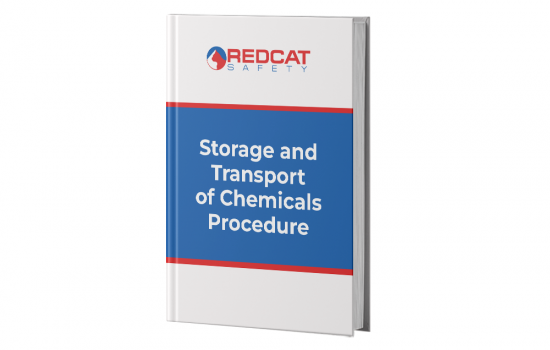What is a Storage and Transport of Chemicals Procedure?
A storage and transport of chemicals procedure is a written document that outlines the legal requirements and employer obligations with regards to chemical storage systems and the transportation of dangerous goods. The procedure applies to the processes that enable safe management practices regarding storing and transporting chemicals and minimizing the risks to health and safety when storing and transporting hazardous chemicals and dangerous goods.
What is a Hazardous Chemical?
In simple terms, a hazardous chemical is any substance that has the potential to cause harm. This includes chemicals that are flammable, corrosive, reactive, or toxic. Hazardous chemicals can enter the body through the skin, lungs, or digestive system. They can also be inhaled, ingested, or absorbed through the skin. Once in the body, they can cause a variety of health effects, ranging from mild to severe. Some hazardous chemicals can cause cancer, birth defects, or reproductive harm. Others can damage the liver, kidneys, or nervous system. Exposure to hazardous chemicals can be reduced by using less-toxic products, wearing personal protective equipment, and following safety precautions when working with or around hazardous chemicals.
What is a Dangerous Good?
A dangerous goods means:
- Asbestos
- Anything defined under a code as:
– Dangerous goods; or
– Goods too dangerous to be transported.
- Contains substances that have been classified as dangerous goods.
Dangerous goods are substances that can pose a risk to people, property, or the environment if they are not handled properly. Dangerous goods are regulated by national and international laws, which vary depending on the type of good.
Safety Precautions for Dangerous Goods
There are also strict rules about how dangerous goods must be handled, stored, and disposed of. People who work with dangerous goods must receive dangerous goods training to ensure that they are aware of the risks involved. When handling, using or storing dangerous goods, the following safety precautions should be followed:
- Management should research hazardous materials regulations and legal requirements for workplace dangerous goods and secure any licenses or permits that are required.
- All dangerous goods should be stored and transported in accordance with the safety data sheet and statutory obligations.
- All dangerous goods should be segregated from incompatible materials with workplace inspections scheduled and performed to ensure compliance is maintained.
- Access to work areas where bulk dangerous goods are stored and used must be restricted and personnel adequately trained on risks.
- Where dangerous goods are stored, approved placards must be placed at entrances and any other location required to meet statutory obligations.
Contents of this Storage and Transport of Chemicals Procedure
- Approval.
- Purpose.
- Scope.
- Terms and Definitions.
- Procedures.
- Introduction.
- Placarding and Manifests.
- Notifications.
- Environmental Licensing and Compliance.
- Manifest for Emergency Services.
- Signage.
- Bulk Containers and Storage.
- Bulk Containers and Tanks.
- Transportation .
- Vehicle Storage and Transport.
- Packaging.
- Fuel Transfer and Mode of Transportation.
- Personal Protective Equipment.
- Emergency Response for Combustible materials.
- Fire Emergency Actions.
- Fire and Explosion Risks with Storage Areas
- Storage of Hazardous and Toxic Substances.
- Health Hazards with Incompatible Chemicals.
- Training.
- Safe Storage of Hazardous Substances.
- Incompatible Substances.
- Segregation Guidance for Incompatible Notes.
- Compatible Goods Guidance Notes.
- Related Procedures, Forms and Documents.
- Review Criteria.
- Record Management.
- References.
Why Choose to Buy this Storage and Transport of Chemicals Procedure
This 15-page storage and transport of chemicals procedure can assist you ensure the storing and transporting of chemicals is done in a safe manner and in compliance with legal obligations.
After purchasing this template you will be able to:
- Very easily edit and customize the template to create your own procedure.
- Apply your own style, format and brand to the procedure.
- Use it in any industry or sector regardless of the size or type of organization.
Availability and Use of this Storage and Transport Of Chemicals Procedure
- This storage and transport of chemicals procedure is accessible to you right now by clicking the ‘Buy Now’ button.
- The procedure will be delivered to you in fully editable Microsoft Word format for immediate and full use in your business.
- There are no subscriptions, contracts or ongoing costs.


